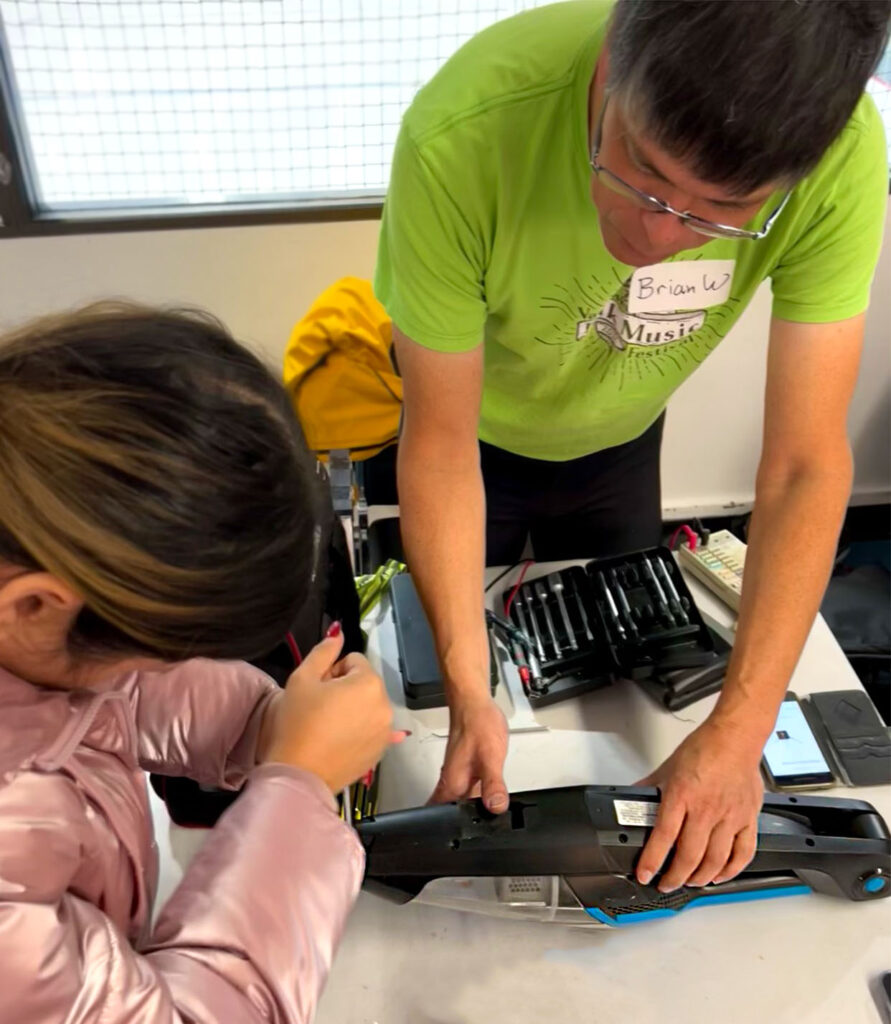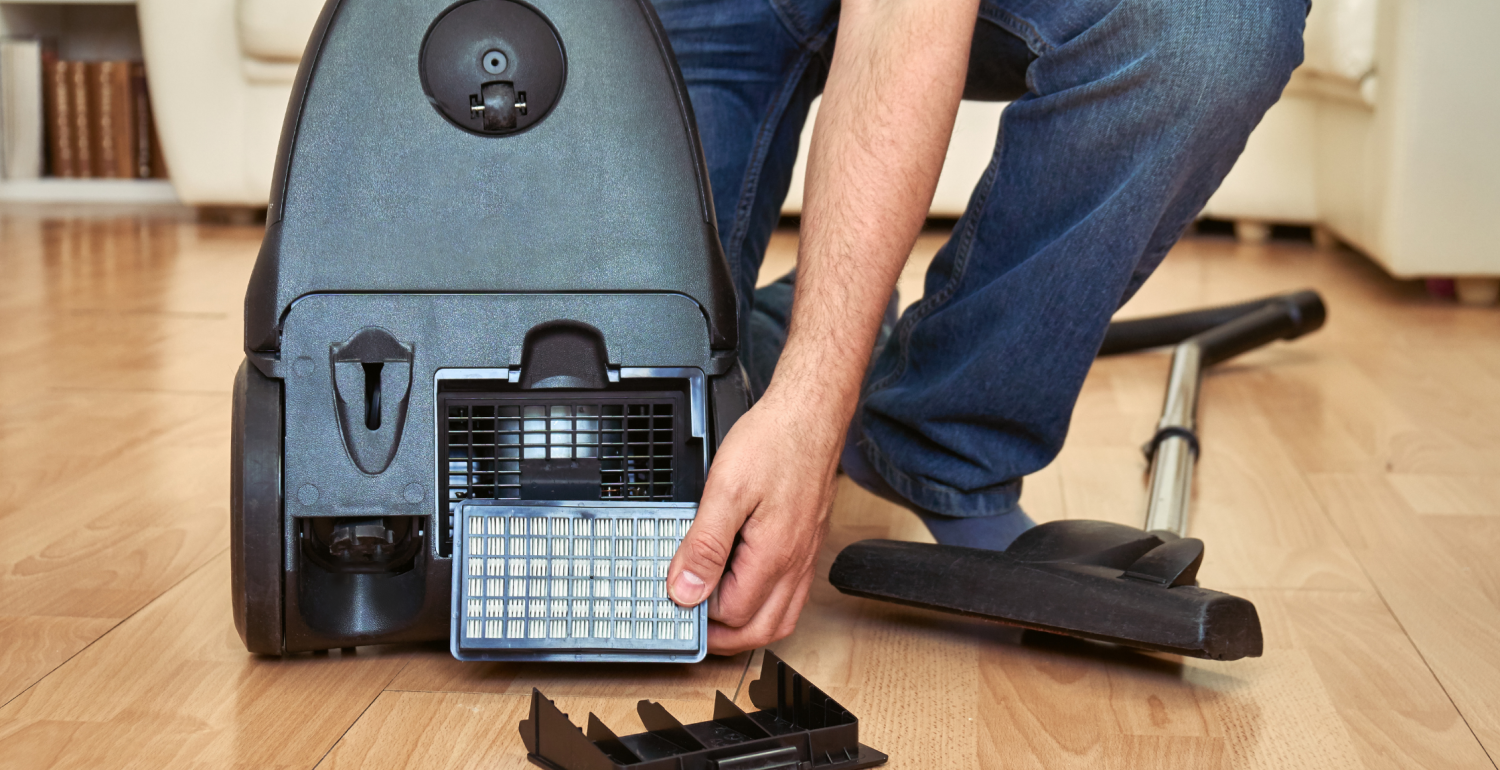Have you ever thrown out a vacuum cleaner because it lacked suction power? You certainly wouldn’t be the first! It’s a shame though, as there’s a high chance the vacuum could have been saved with some routine upkeep. With regular maintenance and some basic troubleshooting knowledge, it’s easy to ensure your vacuum lasts for longer. Yes, we’ll admit that taking care of your vacuum can be a gross task but both your pocketbook and the planet will thank you in the long run. So if the suction starts to suck, don’t recycle it at one of our 250+ collection sites just yet. Try these tips to fix your vacuum first!
Vacuums 101
To start, it’s helpful to learn the basic components in your vacuum. A vacuum cleaner uses a motor and fan to pull dirt from a surface and deposit it in a bag or canister. Simultaneously, dirt is loosened and swept into the vacuum with a rotating (roller) brush. In addition, a filter or multiple filters are used to ensure the dirt that’s sucked up does not go into the motor or get blown out the exit vent of the unit back onto your floor. Overall, these components are arranged in different ways depending on the style and model of vacuum you have, but most have those baseline parts.
Here’s a quick explainer video showing the components of a handheld vacuum:
Vacuum Fixes for Poor Suction Power
There are a few reasons your vacuum may no longer pick up debris as effectively as it should. The first and foremost is that the vacuum bag or canister is full and needs to be emptied. But of course, you’ve already done that, right?
Other issues to investigate which may contribute to low or no suction on your vacuum cleaner include:
Filters are full
If the filter(s) are clogged this will prevent proper suction. Check the owner’s manual to find out where to locate your unit’s filters and how to empty them. Most filters need regular cleaning, and sometimes they may need replacing. Check with the vacuum’s manufacturer to source new filters. If your vacuum is emitting a funky smell, a dirty filter may also be the culprit. Here’s an overview of how to clean your vacuum filters so your machine can help freshen up your home again:
Hose blocked
Over time debris can build up on the inside of the hose causing lower suction power. Thus, it’s important to routinely clean your hose parts. If suction power stops completely, inspect for full blockages. For instance, try shining a flashlight through to detect if the light makes it out the other side. It’s advisable to always follow the cleaning instructions of the manufacturer, but generally, plastic hose parts can be washed with soap and water. Ensure the parts are dry before re-securing them to the vacuum to avoid rust. Alternatively, compressed air or a blunt object can be used to dislodge debris, but make sure not to damage or tear your hose.
Brush roll stuck
Can your brush roll spin? If it’s tied up by hair or string this will prevent suction power and can also damage the vacuum belt. It’s straightforward to clean your roller brush but it’s definitely not a favorite task of anyone! Use a seam ripper or scissors to remove the hair from the brush roll. Be careful not to cut the vacuum brush itself!
Cleaning tip: If a lot of long hair tends to end up on your floors and you’re not a fan of frequently giving your roller brush a haircut – give your floor a quick sweep before vacuuming. Sweeping picks-up hair and prevents it from clogging your vacuum.
Height set for the wrong floor type
Your vacuum is going to struggle if its roller brush is set too high for the floor you’re trying to vacuum. Set the roller brush on the lowest setting for wood or tile and adjust higher for carpet.
Fixes For A Vacuum Belt Issue
If your roller brush is clean but it still doesn’t spin or you smell burning, you likely have a belt problem. Belt issues are fairly common and typically not difficult or expensive to replace. Consult your vacuum’s user manual to locate the belt and determine if it needs replacing (for example if it has snapped or become warped).
This video demonstrates how to replace a belt:
Still Not Fixed?
Don’t give up quite yet! If you need more information on how to take care of or troubleshoot an issue with a specific vacuum model we recommend checking with the manufacturer of the unit. In addition to customer support phone lines, many vacuum manufacturers have support forums on their websites and video channels on YouTube to search. For example, check out the YouTube channels of Bissel, Dyson, and Shark for maintenance tips for your vacuum model. Also, manufacturers may sell spare parts online or be able to recommend a local shop for you to source parts at.
Additionally, check for a local repair shop or an upcoming Repair Cafe happening in your community. Repair Cafes are community gatherings where visitors can get their broken household items fixed, free of charge, with the help of volunteer fixing experts.

What If My Vacuum Cannot Be Repaired?
Taking care of your vacuum regularly and researching how to fix small vacuum issues can save you money and increase the lifespan of your machine. However, when your vacuum does reach a point beyond repair, do you know what to do with it? You can recycle it for free with ElectroRecycle!
Our BC-wide program accepts small appliances, power tools, and exercise machines for recycling. We partner with collection sites across British Columbia to recycle many types of household floor cleaning appliances including robotic vacuums, steam mops, wet-dry vacuums, and more!

Author: Leah Coulter




Comments